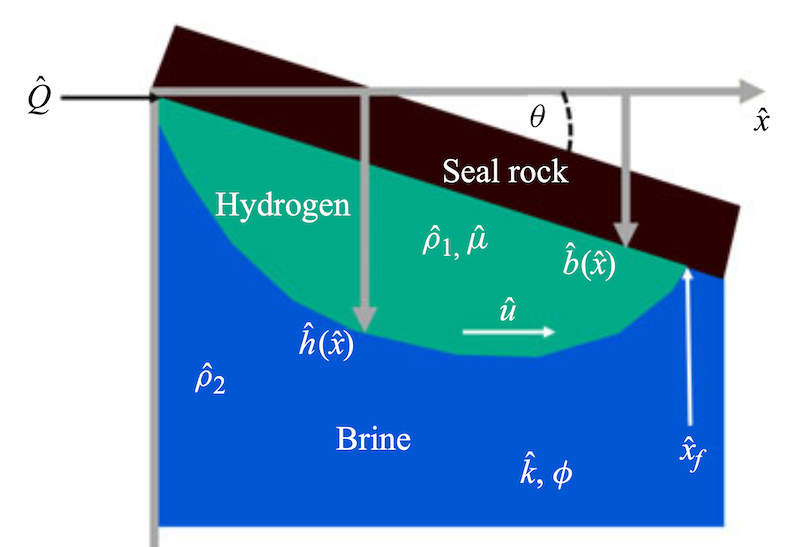Renewable energy sources such as wind and solar are intermittent, and this leads to the need for substantial energy storage. At times of excessive generation, some of the renewable energy might be converted into hydrogen and stored underground. The hydrogen will then be recovered and used when the renewable sources produce insufficient energy.
A recent paper by former PhD student Brian Whelan and professor Andy Woods investigates the periodic injections of hydrogen in the subsurface. Brian and Andy have developed a model which shows that over the first few cycles of injection and extraction, the volume of hydrogen in the system gradually builds up, until it reaches a quasi-steady equilibrium.
At this equilibrium, some of the hydrogen remains in the aquifer even at the end of each extraction phase, and cannot be recovered: this is known as the cushion fluid. In contrast, the hydrogen that is recovered at the end of each oscillation is known as the working fluid. For the storage system to be efficient, the ratio of cushion to working fluid should be as small as possible. Brian and Andy have investigated the key parameters that control this ratio.
This article has now been published by the Journal of Fluid Mechanics, and is available here.
